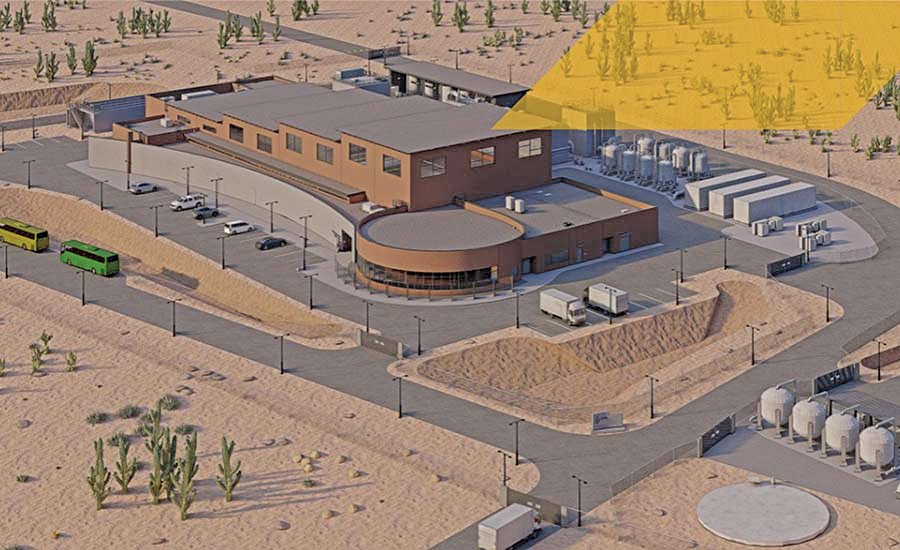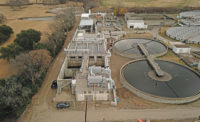$2.5B Mississippi Aluminum Rolling Plant Project to Start
Site development for a multibillion aluminum flat roll mill facility in Mississippi is near completion, with foundation work set for mid-summer. Developer Steel Dynamics Inc., which is serving as the general contractor, stated that it has placed orders for critical production equipment.
The megaproject includes a biochar plant that will produce feedstock for the 2.3-million-sq-ft rolling mill. Engineering work is being done by Neel-Schaffer Engineering.
The facilities are being built in Lowndes County, one of a few Mississippi counties where the Tennessee Valley Authority provides power, says Max Joe Higgins, CEO of the Greater Triangle Development Link, the agency that recruited the firm to build the complex.
The aluminum-producing process takes massive amounts of electricity. According to Higgins, plans do not include the construction and operations of an electrical plant, adding that TVA can supply enough power to run the operation.
This is only the second new rolling mill to be built in the U.S. in the last 40 years. In November, Mississippi Gov. Tate Reeves announced the $2.5-billion project.
The developer’s website states that the plant will produce 650,000 tons of aluminum annually. When fully operational, both sites should employ about 1,000 workers.
Higgins says the biochar plant is slated for completion in 2024, with the mill set to be finished in the first quarter of 2025.
Oklahoma’s $5B Turnpike Project Halted After Court Ruling, AG Audit
The Oklahoma Turnpike Authority halted work on the $5-billion ACCESS Oklahoma turnpike improvement project in mid-April, citing several lawsuits and an agency audit by the state’s attorney general office that will make it difficult to sell bonds for the project.
The decision ends all engineering and road work, except for a small portion of the Turner Turnpike expansion, one of the projects comprising ACCESS Oklahoma. The project entails widening a section of the turnpike from four to six lanes between Oklahoma City and Bristow, the state’s two largest metro areas; constructing reliever routes to the south of Oklahoma City; and adding additional on- and off-ramps to the existing turnpike to increase traffic safety for the state’s rural areas.
“I have mentioned several times, including during the recent board meeting, that our continued ACCESS Oklahoma project work would be impacted or even stopped due to our inability to enter the bond market,” Tim Gatz, secretary of transportation and agency executive director, told the board in a memo.
Bob Stem, executive director of the Association of Oklahoma General Contractors, says the 15-year megaproject was seen as a boon for the state’s construction sector.
“The current workforce will not be impacted, but we were expecting to ramp up hiring,” says Stem, adding that the state had not awarded bids to contractors.
However, engineering firms were hired and ready to get started on ACCESS Oklahoma, with Poe & Associates doing “most of the quarterbacking,” Stem says. The Sooner state budgets about $1 billion annually on highway construction projects, he says. The ACCESS project would double Oklahoma’s highway spending.
When the project was announced in February 2022, problems started almost immediately.
Last summer, the U.S. Bureau of Land Reclamation rejected the planned construction of part of the Norman project because it “is not compatible with the congressionally authorized purpose for which the land was acquired and is still needed.” This led to the agency revamping a portion of the Norman design.
Legal action quickly followed the announcement with most lawsuits challenging the state’s Open Meetings Act. In December, a Cleveland County circuit judge issued a summary judgment finding the authority violated the law by placing the project on the meeting agenda without advertising. The agency is appealing to the Oklahoma Supreme Court.
After the authority announced the work halt, the Oklahoma Attorney General’s Office announced it would conduct an audit of agency finances. In a terse press release, Attorney General Gentner Drummond said: “This is a concerning development that causes me to question the leadership and cash-flow management of this critical agency. While it is unclear what the future holds for OTA, I am certain that the investigative audit I have ordered is needed now more than ever.”
The agency stated that it is awaiting the Oklahoma Supreme Court's ruling, which it believes will rule in its favor. Court “validation would allow the [agency] to enter the bond market and begin work on the plan,” the authority said in a statement to ENR.
PCL/Sundt JV Lands $550M in Water Projects for El Paso, Texas

El Paso Water Utilities awarded two contracts totaling $550 million to a joint venture of PCL Construction and Sundt Industrial Group for system upgrades and construction of new water treatment facilities.
Image courtesy of PCL/Sundt
El Paso Water Utilities awarded two contracts totaling $550 million to a joint venture of PCL Construction and Sundt Industrial Group for system upgrades and construction of new water treatment facilities.
The contracts call for upgrades to El Paso’s Roberto R. Bustamante Wastewater Treatment Plant and construction of the $150-million Advanced Water Purification Facility on the effluent side of the Bustamante facility, supplying potable water to the east and southeast parts of the city.
“There’s a lot of equipment that needs to be upgraded, a lot of equipment that needs to be made more robust.”
—Gilbert Trejo, Chief Operations Officer, El Paso Water
The city received only one bid for the projects. The PCL-Sundt proposal “met all the requirements, so we recommended award of the contract, which was approved by the Public Service Board,” says Denise Parra, public affairs officer for El Paso Utilities.
The completion of both facilities is expected by 2030. According to PCL, when operational, the new facility will produce 10 million gallons per day of fresh drinking water.
The $400-million Bustamante plant project, named after a long-time El Paso water engineer, treats wastewater and returns clean water. Upgrades to the 32-year-old facility are expected to increase flow to 51.4 MGD from 39 MGD and extend the plant’s life by 30 years.
“There’s a lot of equipment that needs to be upgraded, a lot of equipment that needs to be made more robust,” says Gilbert Trejo, El Paso Water chief operations officer. The discharge is used mainly for irrigation in the desert city, which gets an average of 9 in. of rainfall annually.
The projects are funded by state, local and federal governments, including the Infrastructure Investment and Jobs Act. The projects are the first for PCL Construction in El Paso, though Sundt has worked with the city for more than five decades.




